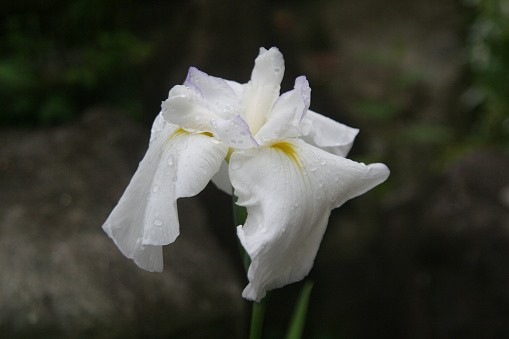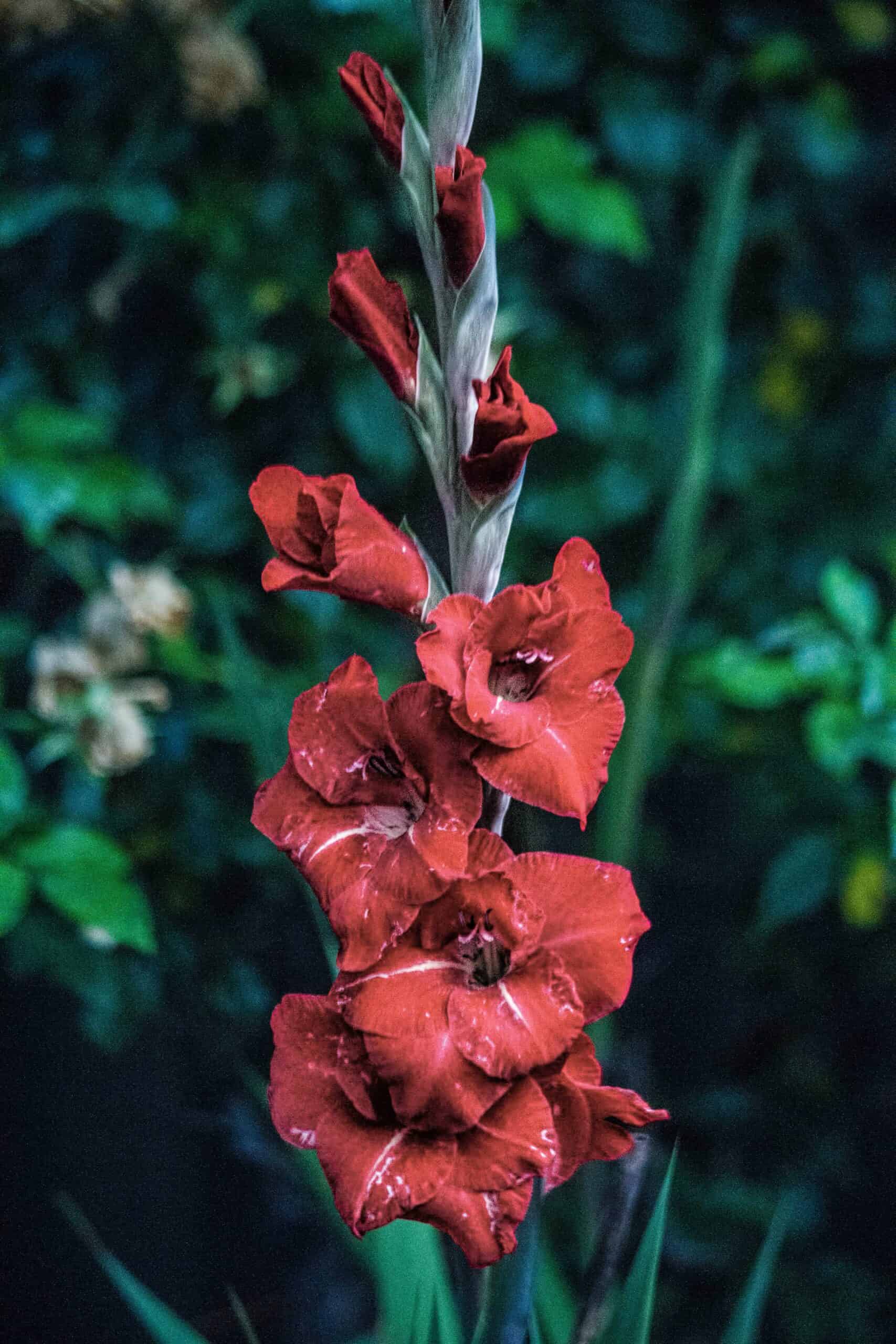The Japanese Iris (Iris ensata) is a species of the iris family with gorgeous petals said to resemble orchid blooms. This gorgeous species can come in a variety of colors, including blue, lavender, pink, violet-red, and white, with a yellow dot at the center. It has won the hearts of both gardeners and flower enthusiasts due to its beauty, as well as its wide array of colors and sizes. The Japanese Iris can grow up to four feet high, which makes it one of the tallest types of iris.
Etymology
The Japanese Iris got its name from its Japanese origin. “I-ri-su” is the Japanese pronunciation for ‘iris’, which is derived from the Greek word for ‘rainbow’. This moniker is not only appropriate for the wide array of colors that the Japanese Iris offers, but also for its rainbow-like appearance. The species name ensata is also from the Japanese word “En” meaning weight and “Sata” meaning hundred. This is a reference to the Japanese Iris’ heavy blooms.
Meaning & Symbolism
The Japanese Iris has a long history of symbolic meaning associated with it. In the traditional language of flowers, the Japanese Iris symbolizes faith, wisdom and valor. In Japan, the flower is said to represent courage, friendship and admiration. In China, the flower is thought to represent elegance and refinement and is often a part of special celebrations such as weddings or other special occasions.
History, Mythology & Religious Significance
In the past, the Japanese Iris was seen as a strong symbol of protection and was said to ward off evil spirits. It was also used as a medicine in traditional Chinese medicine and was thought to cure many ailments. In Japan, the Japanese Iris is the official flower of the Ise Shrine and has been planted around the shrine since 1868. Today, it is highly venerated as a sacred and protective deity and is often used in Japanese tea ceremonies.
Flower Varieties & Their Characteristics
There are many varieties of Japanese Iris, with each offering its own unique characteristics. The most popular include: Iris laevigata, which is known for its deep purple or blue petals; Iris ensata, which is characterized by its white or near-white petals; and Iris pallida, which is known for its beauty and stunning flower heads. Other popular varieties include: Iris confusa, with its pale pink blooms, and Iris florentina, with its deep golden yellow petals. All varieties of Japanese Iris grow best in full sun, in well-drained soils, and are often used to create an impressive backdrop for flower gardens.
How to Plant & Grow
Japanese Iris is best grown in full sun in moist and fertile soils. It is also important to ensure that the soil is well-drained and that the plant is receiving adequate moisture, as too much water can cause fungal diseases. While it can tolerate some shade, it is important to ensure that the soil is receiving enough sunlight. For best results, plant Japanese Iris in the early spring and fertilize regularly with a balanced fertilizer.
When planting the rhizomes, it is important to ensure that they are planted at the same level and about 6 inches away from each other. Additionally, it is important to keep the soil moist and mulch regularly. When temperatures hit above 80 degrees Fahrenheit, it is important to give the plant extra water to prevent wilting. Japanese Iris is best suited for growing in USDA Hardiness Zones 4-9.
How to Pot & Repot
When potting Japanese Iris, it is important to use well-draining soil and to ensure that the soil is kept moist but not soggy. Additionally, be sure to choose a pot that has sufficient drainage holes, as too much water in the pot can cause root rot. For best results, plant rhizomes of the Japanese Iris in a shallow depression and lightly cover with soil.
Once the iris is planted, it is important to water it deeply and allow the soil to dry out between waterings. It is also important to repot the iris every one to two years, using a fresh batch of soil. When repotting, carefully lift the iris out of the pot, separate it into multiple clumps, and re-pot the clumps into separate containers. Keep in mind that when replanting Japanese Iris, it is important to not damage the plants’ roots.
How to Prune
Pruning Japanese Iris requires careful timing and technique. Pruning should be done in late summer or early fall, before the plants go dormant for the winter. When pruning, it is important to remove any dead foliage, dead stems, and dead flowers. It is also important to remove any yellowed or discolored leaves to promote new growth and reduce the risk of disease. Additionally, it is important to snip away any stray stems or shoots that are growing too close together.
How to Propagate
Japanese Iris is best propagated through division of the rhizomes. This can be done using a sharp knife or spade. For best results, it is important to divide the rhizomes in the spring or fall, when the temperatures are cooler. When dividing the plants, it is important to make sure that each rhizome has at least one eye-like bud, as this will ensure that the plant will produce new blooms. Additionally, make sure to replant the divisions in well-draining soil and water them deeply upon planting.
Common Pests & Diseases
When it comes to pests and diseases, Japanese Iris is fairly easy to care for. Like other plants, it can be prone to pests and diseases, such as aphids, slugs, caterpillars, and fungal diseases. To prevent pests, it is important to keep the area free of debris and to check for damaged leaves and stems. To prevent fungal diseases, it is important to water at the base of the plant and to ensure that the soil is well-draining. Additionally, it is important to apply a fungicide if needed.
Frequently Asked Questions
Q: How long do Japanese Iris bloom?
A: Japanese Iris typically bloom in late spring to early summer and can last up to two months.
Q: How do you care for Japanese Iris?
A: When caring for Japanese Iris, it is important to ensure that the soil is well-draining, and to supply the plant with adequate sun and water. Additionally, it is important to mulch and fertilize the plant, as well as to prune and divide it, to promote healthy growth.
Q: What zone can Japanese Iris grow in?
A: Japanese Iris is best suited for growing in USDA Hardiness Zones 4-9.
Table Fact Sheet
| Flower | Details |
|---|---|
| Japanese Iris | Iris ensata |
| Family | Iridaceae |
| Plant Type | Perennial |
| Mature Size | Up to 4 feet high |
| Sun Exposure | Full Sun |
| Soil Type | Well-draining |
| Soil pH | 6.0-7.5 |
| Bloom Time | Late Spring/Early Summer |
| Flower Color | Blue, Lavender, Pink, White, Violet-Red, Yellow |
| Hardiness Zone | 4-9 |
| Native Area | Japan |
The Japanese Iris is an amazing and elegant species with varieties ranging from white to lavender, with yellow centers. It is well-loved for its beauty and wide array of colors and sizes. This species is best grown in a full sun location with moist, well-draining soil. When planting the rhizomes, be sure to ensure that they are planted at the same level and about 6 inches away from each other. Additionally, it is important to keep the soil moist and mulch regularly. It is important to also prune away dead foliage, dead stems, and dead flowers, as well as to divide the rhizomes every one to two years and to repot them using a fresh batch of soil.
Additionally, it is important to keep an eye out for common pests and diseases, such as aphids, slugs, caterpillars, and fungal diseases and to take the necessary steps to prevent damage. When done properly, Japanese Iris can be grown successfully and can thrive in your garden for many years to come.
What we love from Amazon this week
Buy these wonderful flowers directly from Amazon:















